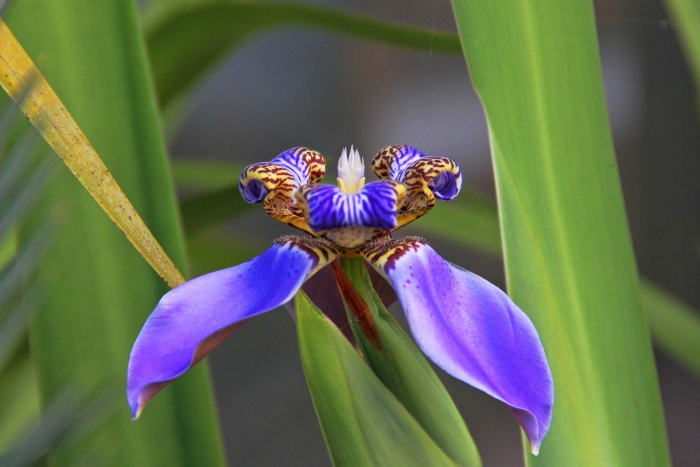Apostle Plant
(Neomarica coerulea)
Apostle Plant (Neomarica coerulea)
/
/

Letícia Smania Donanzan
CC BY 2.0
Image By:
Letícia Smania Donanzan
Recorded By:
Copyright:
CC BY 2.0
Copyright Notice:
Photo by: Letícia Smania Donanzan | License Type: CC BY 2.0 | License URL: https://creativecommons.org/licenses/by/2.0 | Uploader: Red panda bot | Publisher: Wikimedia Commons |











Estimated Native Range
Summary
Neomarica coerulea, commonly known as Apostle Plant, is an evergreen perennial herb native to the tropical forests and wetlands of Brazil. It typically grows to a height of 2-3 feet (0.6-0.9 meters) and spreads to about 3 feet (0.9 meters) wide. The Apostle Plant has a clumping habit with long, strappy leaves that give it a grass-like appearance. It produces striking iris-like blue flowers with a pale yellow or white center that bloom in the spring and summer. The flowers are quite showy and last only one day, but the plant frequently blooms, providing a succession of flowers over the season.
The Apostle Plant is valued for its lush foliage and beautiful, short-lived flowers. It is often used in borders, as a ground cover, or in container gardens. It thrives in moist, well-drained soils and prefers conditions that mimic its native tropical habitat, such as high humidity and warm temperatures. It can tolerate a range of light conditions from full sun to part shade. While generally easy to maintain, it can be susceptible to root rot if overwatered or if the soil does not drain well. It is not known to be invasive when grown outside its native range, but gardeners should always monitor their plants and manage them responsibly.CC BY-SA 4.0
The Apostle Plant is valued for its lush foliage and beautiful, short-lived flowers. It is often used in borders, as a ground cover, or in container gardens. It thrives in moist, well-drained soils and prefers conditions that mimic its native tropical habitat, such as high humidity and warm temperatures. It can tolerate a range of light conditions from full sun to part shade. While generally easy to maintain, it can be susceptible to root rot if overwatered or if the soil does not drain well. It is not known to be invasive when grown outside its native range, but gardeners should always monitor their plants and manage them responsibly.CC BY-SA 4.0
Plant Description
- Plant Type: Herb
- Height: 2-3 feet
- Width: 2-3 feet
- Growth Rate: Moderate
- Flower Color: Blue, Purple
- Flowering Season: Spring, Summer
- Leaf Retention: Evergreen
Growth Requirements
- Sun: Full Sun, Part Shade
- Water: Medium
- Drainage: Medium
Common Uses
Bee Garden, Bird Garden, Butterfly Garden, Drought Tolerant, Hummingbird Garden, Low Maintenance, Showy Flowers
Natural Habitat
Tropical forests and wetlands of Brazil
Other Names
Common Names: Twelve Apostles, Walking Iris
Scientific Names: , Neomarica caerulea, Neomarica coerulea, Trimezia coerulea, Neomarica speciosa, Marica caerulea, Trimezia caerulea, Cypella coerulea, Trimezia caerulea subsp. eximia, Cipura caerulea
GBIF Accepted Name: Neomarica coerulea (G.Lodd.) Sprague